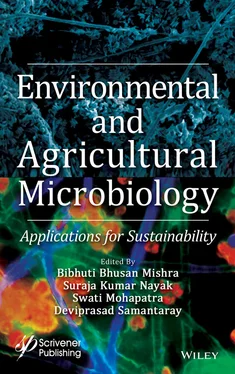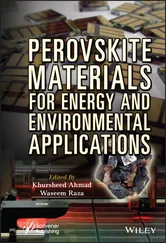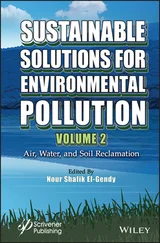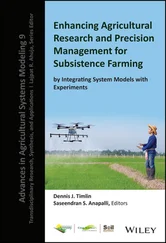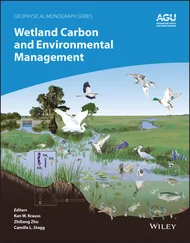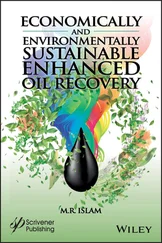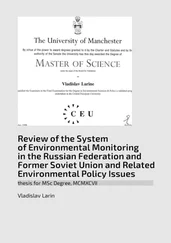
Figure 4.4 Overview of different manufacturing methods of lactic acid (a) chemical synthesis and (b) microbial fermentation [20].
Table 4.1 Reports in the literature about recent investigations on the biotechnological production of lactic acid from cheap raw materials.
| Substrate |
Microorganism |
Fermentation method |
Lactic acid |
References |
| Process productivity g/(L.h) |
Yield (g/g) |
| Sugarcane bagasse hemicellulose hydrolysate |
Bacillus sp. 75 strain 17C5 |
Batch |
0.8 |
0.93 |
Patel et al ., 2004 [49] |
| Corn fiber hydrolysate |
Bacillus coagulans MXL-9 |
Fed-batch |
0.21 |
0.46 |
Bischoff et al ., 2010 [50] |
| Biomass derived xylose |
Bacillus coagulans NL01 |
Batch |
1.04 |
0.75 |
Ouyang et al ., 2012 [51] |
| Various carbohydrates |
Enterococcus faecalis RKY1 |
Batch |
5.1 |
0.96 |
Yun et al ., 2003 [52] |
4.3.2 Polymerization Method
PLA can be synthesized using three ways: (a) The first pathway is condensation polymerization of the L(+) and D(−) isomers of lactic acid which produce low molecular weight PLA, (b) the second route involves ring-opening polymerization of the lactide ring ( Figure 4.5). Cargill Dow LLC developed an alternative pathway of melt polycondensation and the use of a tin catalyst to obtain commodity PLA applicable for packaging industries. This pathway involves the pre-polymer formation of aqueous lactic acid and converting into lactide stereoisomer through intramolecular cyclization. In the next step, lactide ring-opening produces high M wPLA [21] using stannous octoate Sn(Oct) 2as a catalyst [22].
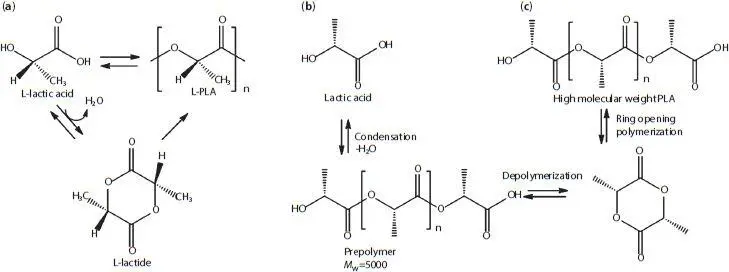
Figure 4.5 (a) Conventional polymerization of polylactic acid, (b) High M w PLA preparation through catalytic lactide formation method (c) The third route involves azeotropic dehydrated condensation of lactic acid to obtain high M w PLA without the chain extenders’ addition.
4.3.3 Biodegradability of Polylactic Acid
PLA attains researchers’ keen attention among all the biodegradable plastics due to its complete application in the agriculture and packaging industry, as PLA films are mechanically stable and biodegradable. Biodegradation of PLA occurs in the following two pathways: (a) Fragmentation of the polymer leading chains occurs via hydrolysis in the presence of acidic or basic conditions. Moisture plays a vital role in lowering M nvalues below 40000, (b) followed by bio-assimilation of disintegrated oligomers by environmental microorganisms to carbon dioxide, water, etc. Biodegradability depends on the chemical structure as well as the polymer sources. Proteinase K was a widely used microorganism for PLA bio-degradation [23]. However, they are able to degrade oligomer products or lactic acids but not PLA itself. Degradability can be controlled in various synthetic ways, and a few popular methods are discussed as follows.
4.3.4 Copolymerization Method
The degree of crystallization is directly connected to the rate of bio-degradability and amorphous copolymers between L-lactide and glycolic acid monomers. The prepared poly(lactide- co- glycolide) shows faster degradation than PLA, and increasing glycolide contribution rate further increases [24]. Grafting copolymerization between L-lactide into chitosan (high content) using a tin catalyst increases the thermal stability and degradability rate [25].
Biodegradability rate can be increased in the blending method in between PLA and lactic acid (0%–5% of lactic acid content), and the changes were observed in chemical or physical properties. Lactate is an available substrate for different bacterial species to facilitate PLA degradation by providing carbon and energy source [26].
4.3.6 Nanocomposite Formation
PLA nanocomposites with montmorillonites (nanoclay) can enhance the degradation rate because hydroxyl groups belonging to the silicate layers facilitate the hydrolysis process. Nanoclays’ effect on PLA biodegradability is enhanced by their excellent dispersion over the polymer surface and depending upon their chemical structures and affinity toward bacterium [27].
Along with conventional uses, exciting PLA or its stereocomplex PLA applications are possible due to its favorable mechanical properties, tunable degradation rates, and high biocompatibility. These specific properties are possible with its copolymer such as Poly(lactic- co- glycolic acid) (PLGA) and which can be further utilized in periodontal regenerative medicine.
4.4 Polyhydroxyalkanoates
Definition
PHAs are the family of bio-polyesters and are among well-known biodegradable plastics and well recognized as entirely biosynthetic and biodegradable with almost zero toxic waste be recycled into organic waste [30–32]. PHAs act as microbial reserve compounds for energy [33] and carbon [34] and hold a great potential to replace the petroleum-based compounds in the plastic market are termed as “green plastics” [35]. They show a wide range of properties that can be accessed biosynthetically by selected prokaryotes, and this opens the potential market for substituting petroleum-based products such as elastomers, thermoplastics by PHAs.
Rising concern for greenhouse gas emissions facilitates bio-based materials and promotes the PHA market in the future. PHAs commercial use increased from an estimated value of 10,000 metric tons (MT) to 34,000 MT in 2018, with a CAGR of 27.7% [36]. PHA biopolymer is expensive as compared to PP and PE. This high price is due to the high purity of substrates such as glucose, its production in various batches, and a large amount of solvents [2]. With the increasing availability of renewable raw material and increasing demand to use biodegradable polymers for bio-medical use and food, applications are beneficial to the PHA market, and its market is expected to US$93.5 million by 2021 from US$73.6 million in 2016.
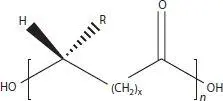
Figure 4.6 Structure of polyhydroxyalkanoates (x = number of methylene groups in the backbone; n = 1000-10000; R = alkyl groups, C 1-C 13).
4.4.1 Biosynthesis of Polyhydroxyalkanoates
PHA ( Figure 4.6) biosynthesis begins from the feedstocks like hexoses, pentoses, lactose, maltose, lipids, alcohols, organic acids, or gases like carbon dioxide or methane under undesirable growth conditions due to imbalanced nutrient supply [2, 3]. PHAs are unique among biopolymer families whose production and degradation depend on the living cells. Hydroxyl groups of PHAs are produced in recombinant Escherichia coli JM109 in the presence of glycolate as the only carbon source. The propionate-CoA transferase ( pct ) gene from Megasphaera elsdenii and the β-ketothiolase ( bktB ) gene and phaCAB operon from Ralstonia eutropha H16 were introduced into E. coli JM109. Another alternative and convenient synthetic approach to synthesize PHAs is a chemical method that utilizes a ring-opening polymerization mechanism of β-lactones, including anionic, coordination-insertion, organo-catalyzed, enzymatic, and cationic processes.
Читать дальше
